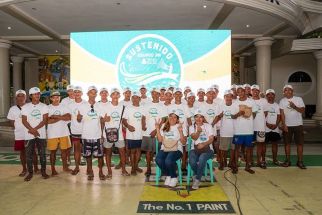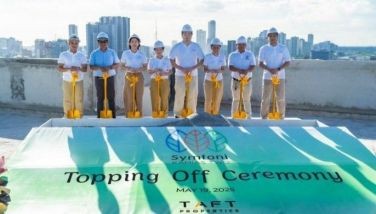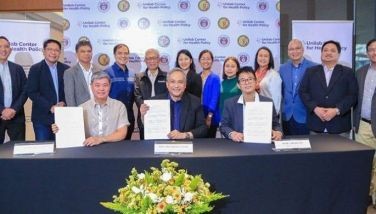Places to visit

This summer break, drive around the lakeside towns surrounding Laguna de Bay, starting from either Rizal province or Laguna, birthplace of national hero Jose Rizal.
That area is rich with history and folkloric enchantment. The greenery is lush and you can stop in several areas to sample regional cuisine. There are artists’ villages along the way, natural hot springs, churches for your visita Iglesia, waterfalls, rivers, and that strange sloping road on Mt. Makiling. From the Antipolo hillside you can enjoy a panoramic view of Metro Manila.
Recession woes have devastated the international travel and tourism industry. The country manager of a top airline told me that while the immediate impact on their business has not been as bad as in the period after the terrorist attacks on 9/11 or the outbreak of SARS, they expected this downturn to be longer and worse for their finances.
But we can’t limit ourselves to our daily commute from home to the office or school and back, or hang out forever at the mall, especially during the Lenten break when even the malls would be closed.
Those who are on a recession budget can still drive around destinations near Manila: Anilao in Batangas for diving, Tagaytay for the weather and scenery and then down to Talisay for the best freshwater fish plus a boat ride around the volcano lake and a horse ride up to Taal’s crater.
Or else you can take that drive around Laguna de Bay.
All economists are saying that we have to spend if we want speedy recovery from the global slump. So even if we are on a severely restricted budget, we can still travel. After all, gas is cheap, the oil industry being one of the worst hit by the recession.
We have a beautiful country with numerous attractions, from quaint Batanes in the north to Sarangani in the south and the southwestern tip of Palawan. Even the islands of Tawi-Tawi, Sulu and Basilan, where there are great spots for snorkeling, can benefit from tourism development.
Unfortunately, the country suffers from weak marketing, tourism infrastructure, business development and other problems such as security and pollution.
* * *
With so much tourism potential, the country should have given priority to the development of the travel and tourism industry ages ago. But as in many other aspects of national life, the international race in this area seems to have passed us by.
In the third annual report prepared by the World Economic Forum on tourism and travel competitiveness, we fell five notches among 133 countries, from last year’s already dismal 81st place to 86th.
The criteria of the competitiveness survey included management of natural and cultural resources, focus on environmental sustainability, the quality of transportation and telecommunications infrastructure as well as tourism infrastructure such as the availability of hotels and ATM access. Also factored in were prices, hygiene and sanitation, security, locals’ attitude toward visitors, the priority given by the government to the development of the travel industry, and policies governing foreign investments in the sector.
Tiny Singapore jumped six notches from last year, landing in the Top 10 in the latest survey, and becoming the highest ranked among Asian countries. Singapore was rated No. 1 in the quality of its human resources as well as policies governing travel and tourism investments. It was also considered one of the safest countries in the world to visit, with excellent transportation and telecommunications infrastructure.
This is what the WEF had to say about the Philippines:
Among the country’s strengths are its natural resources: it is ranked 23rd for the number of World Heritage natural sites and 40th for the total known species in the country. The Philippines also benefits from excellent price competitiveness (ranked 16th), with low prices overall, particularly hotel prices, and low ticket taxes and airport charges. There are also some aspects of the policy rules and regulations regime that are conducive to the development of the sector, such as few visa requirements for foreign visitors (ranked third) and bilateral Air Service Agreements that are assessed as comparatively open (28th), although other areas – such as the protection of property rights, rules related to foreign investment, and the difficulty of starting a business in the country – remain a challenge. Other matters of concern are safety and security (ranked 113th), health and hygiene levels (87th), and transport, tourism and ICT infrastructures that require upgrading.
We were ranked behind Hong Kong, Japan, China, Taiwan, South Korea, India and Sri Lanka. We lagged even in Southeast Asia. Apart from Singapore, Malaysia was ahead of us at 32nd spot. Thailand placed 39th, Brunei 69th and Indonesia 81st. At least Vietnam and Cambodia, despite the popularity of Siem Reap, were still behind us in ranking, although Vietnam has overtaken us in tourism arrivals and receipts. Laos and Myanmar were excluded from the survey.
* * *
Ranked the most competitive were the most developed destinations. Switzerland was tops, with its focus on environmental sustainability, its preservation of its natural and cultural heritage, and its excellent infrastructure for everything.
Next in ranking were Austria, Germany, France, Canada, Spain, Sweden, the United States, Australia and Singapore.
These are, of course, among the most affluent countries, with money to spend on the development of their human, natural and man-made resources.
But even developing countries such as Thailand and Indonesia were rated better than us. Colombia, Peru and Namibia also rated higher.
The countries in the Top 10 can host tourists, the largest business convention or a summit of global leaders without needing special preparations. Paris can host the Olympics with its eyes closed.
These countries have long been ready to welcome the world: their people, the environment, the attractions both natural and man-made, the infrastructure, the rules and laws that are enforced. Their tourist spots have clean public toilets and safe drinking water. Their roads are not riddled with potholes after every downpour.
They show that if you make your country a great place to live, the world will come to visit.
- Latest
- Trending

























